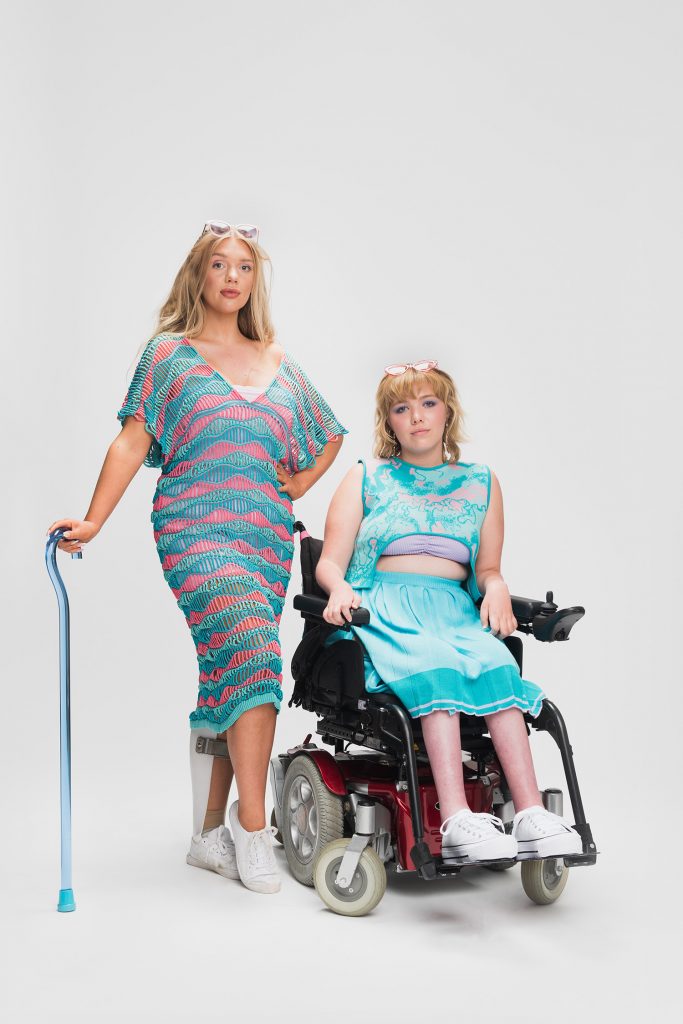Gemma Tyte is 22 and studying Fashion Knitwear Design at Nottingham Trent University. She lives with mild cerebral palsy and believes that today’s high street brands need to “think outside the box” when it comes to offering inclusive fashion.
Her collection is called Bermudaful Adaptations, and it has been thoughtfully designed to cater for wheelchair users and people living with other impairments, as well as larger sizes to increase inclusivity. Focusing on womenswear, Gemma’s knitwear design feature bold colours and styles that will appeal to a young fashion conscious individual.
Her garments include:
- A cotton top for wheelchair users which is cut out at the front and features a high back curve – meaning less excess fabric.
- Shorts and a top as undergarments made from comfortable merino wool, with elastic waistbands. The top features strong magnets sewn into the material to fasten the straps. Seams have been omitted from areas that a person sits on to increase comfort.
- A beach dress with a low back that is oversized to make it easy to put on, which is designed for people with a hidden disability.
- A poncho-like cape with hood that fastens with magnets. There are straps around the waist to secure it down.
- A textured dress, with adjustable back.
- A skort – shorts which look like a skirt – to provide modesty when seated, designed with a higher back to front, magnetic seams and an elasticated waist.
- A zero waste skirt that wraps around and has poppers and ties.

Gemma comments on the fashion industry: “When you consider that over 15% of the population have a disability, it makes you wonder why there’s so little adaptive clothing on the market.”
“It’s even claimed there are more clothing lines for dogs than for people with disabilities, which is astonishing.
“So I want to encourage brands to think outside of the box and make big differences to be inclusive and show that it’s possible with minor adjustments to their existing ranges.
“In many cases it only means incorporating things like Velcro and magnets instead of buttons, so that garments can be fastened easily.
“Disabled people want to look like everyone else, but a lot of adapted clothes are very functional and boring. They’re not unique and don’t allow people to express themselves.”
Gemma’s work will feature in Nottingham Trent University’s art and design Summer Show, which will see graduating artists and designers displaying their work as part of an online public exhibition on wearecreativesntu.art.
Ian McInnes, Principal Lecturer in Fashion Knitwear Design at Nottingham Trent University, said: “Gemma has taken her personal experience with modern fashion, sought the views of a range of people with disabilities, and provided a workable solution for the industry to consider.
“Her designs show that inclusive fashion can and should offer vibrant and stylish clothing, allowing people to express themselves and communicate to the outside world how they perceive their own identity.”
All images by Bartek Bartusiak

